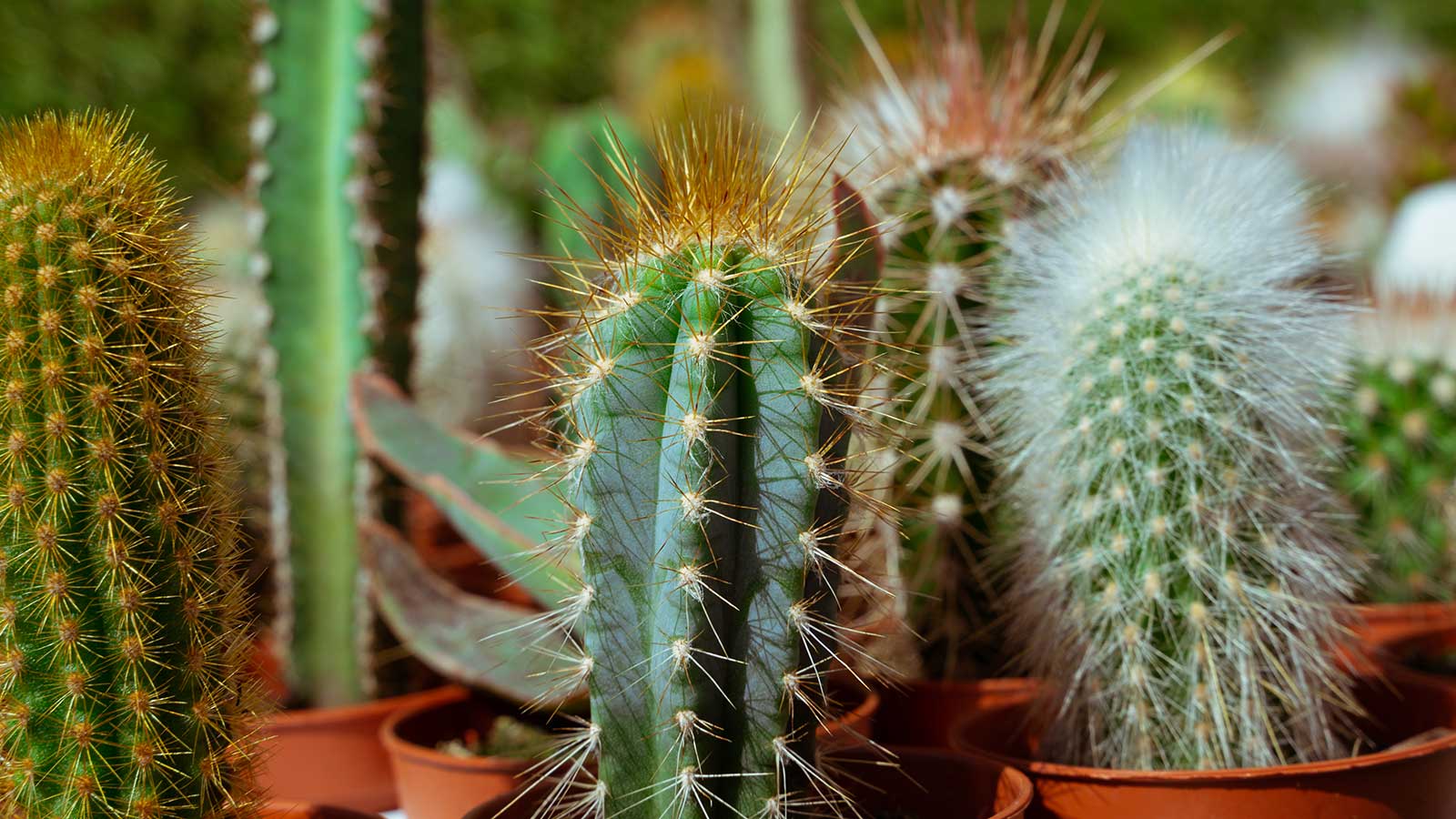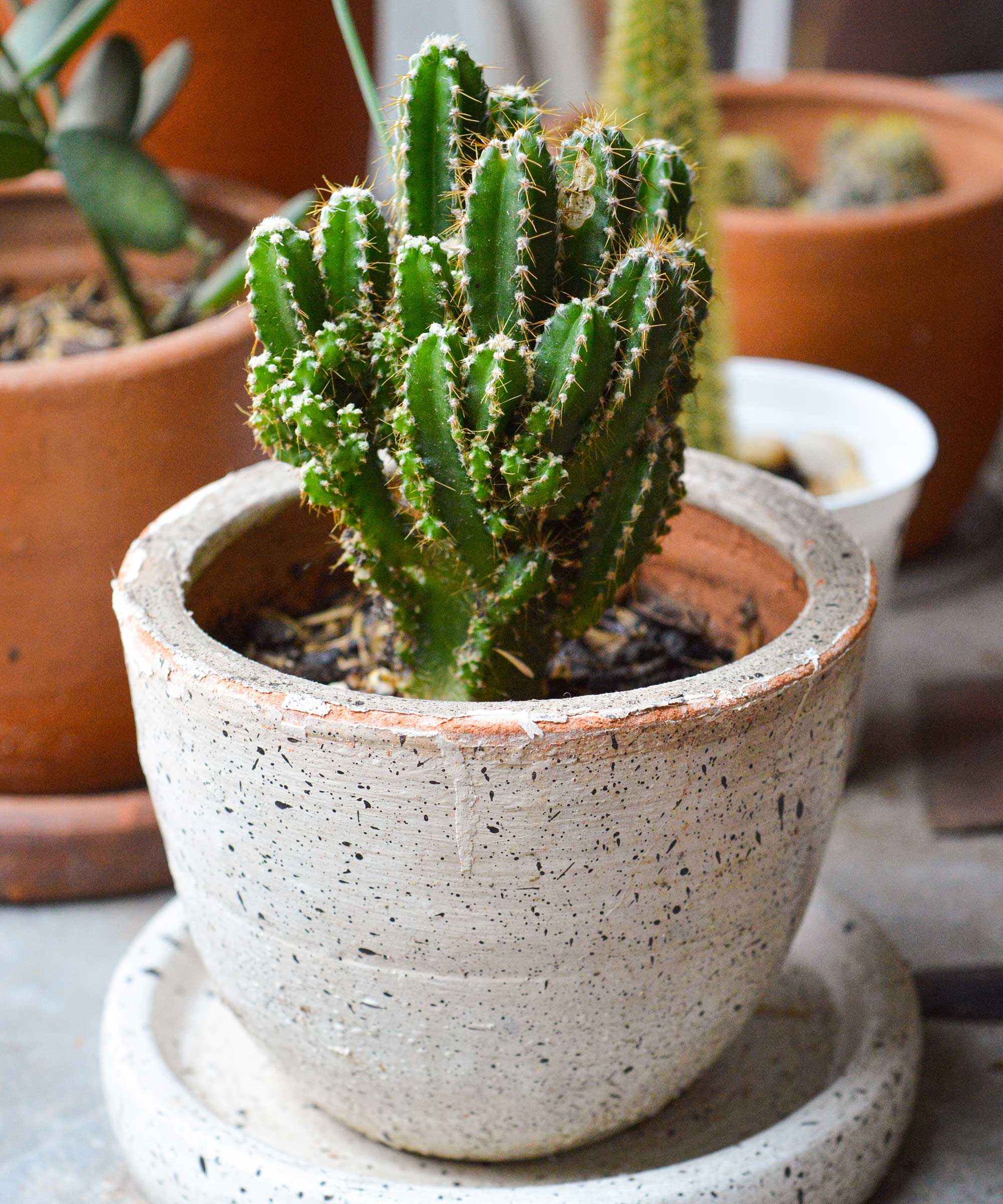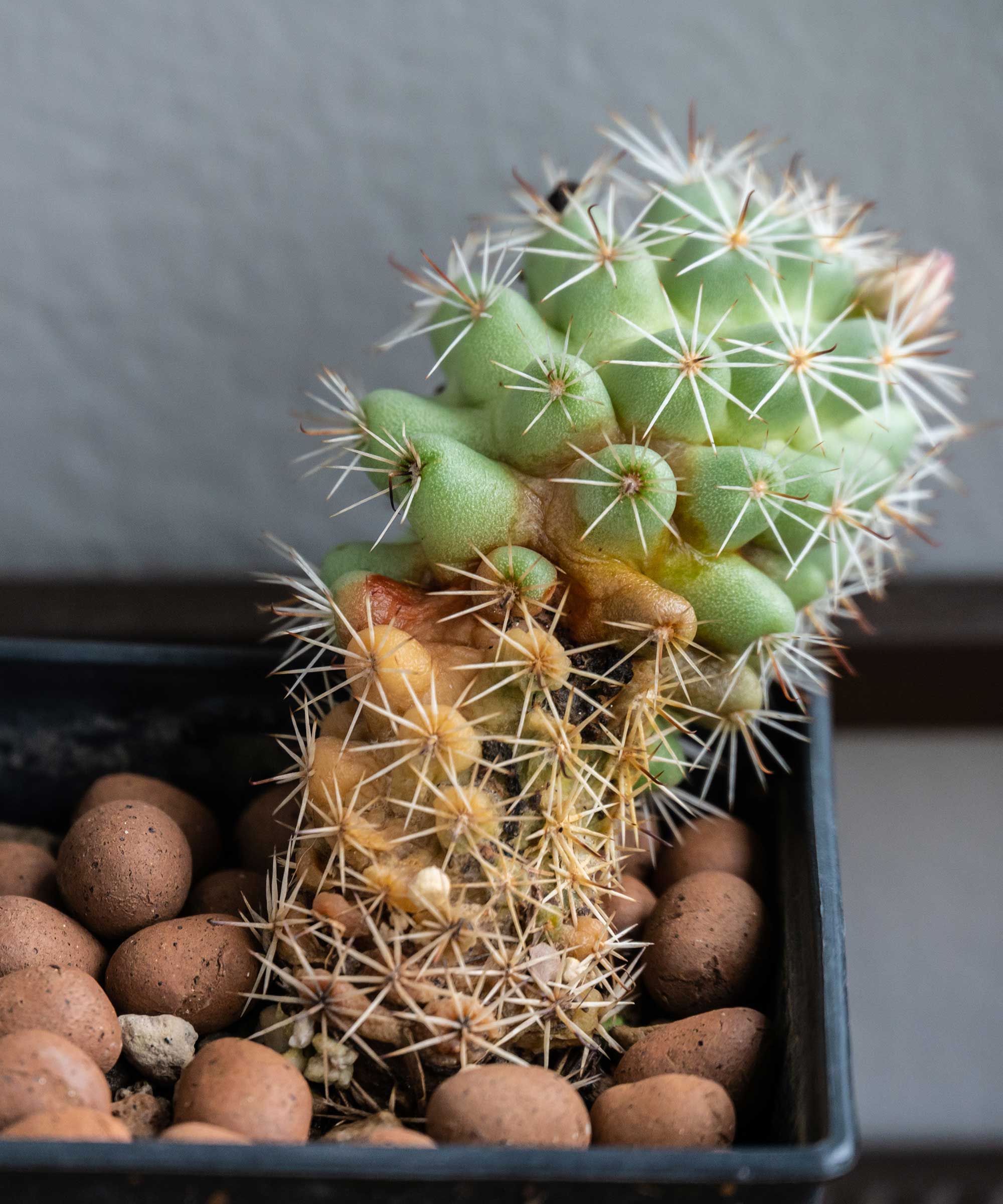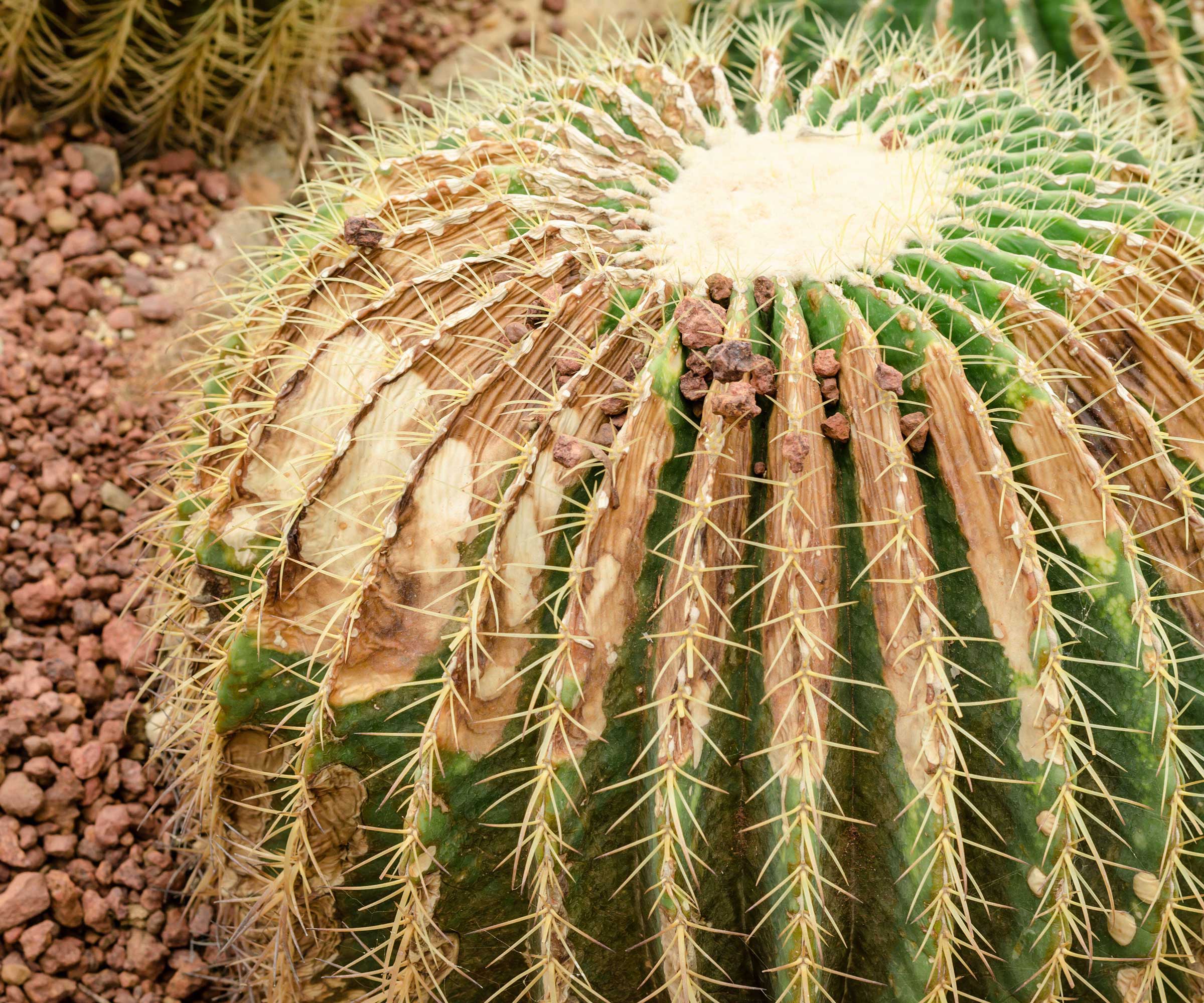
Q: I have a potted cacti display on a windowsill in my home office. A couple of the plants have recently developed unsightly, brown markings. What's caused this, and can I get rid of it?
A: For the most part, cacti are a dream indoor plant due to their undemanding, drought-tolerant nature. The brown markings may, however, be an indicator that something isn't quite right – from watering habits to too much sun. On the other hand, they can also be a natural sign of age, known as corking.
The first step is to identify the problem – and that's where these tips can help.

3 causes of cacti discoloration that can be avoided
Sometimes, the growing conditions are to blame for a cactus changing its hue.
1. Watering problems
First, consider your cactus watering habits, as they may be the root cause of the problem.
As succulents, these plants are susceptible to root rot. This is generally caused by overwatering your cacti. Using well-draining soil, such as this organic potting mix for cacti and succulents from The Valley Garden Store at Amazon, can help to prevent this problem. Root rot can cause a yellow-brown coloring, a mushy texture, and, if you were to break open the cactus, an unpleasant smell.
Note that the risk of root rot doesn't mean you shouldn't water cacti at all. In fact, an under-watered cactus can also develop discoloring, along with a shriveled appearance.
'To maintain healthy cacti, it is recommended to establish a watering schedule,' says Autumn Hilliard-Knapp of Perfect Plants Nursery. 'Water them less frequently but more thoroughly to ensure the water reaches all the way through the soil and is absorbed by the roots.'
Furthermore, it is advisable to use room-temperature water for watering cacti, she adds – otherwise, you may 'shock' the plant.

2. Sunburn
Sunburn can also cause yellowing and brown spots on a cactus. Although these houseplants love plenty of light, if you change the conditions dramatically in a short space of time – for instance, if you move them from a shady shelf to an excessively sunny windowsill – it can cause stress.
Move the affected plant to a less sunny spot and water it if needed. If the damage is severe, the blemishes are likely to remain on the plant.

3. Plant pests and diseases
Finally, fungal diseases, including rust, can cause discoloration – especially for plants kept outdoors where spores can easily spread.
Fungicides can be used as a preventative measure, or sometimes to tackle mild cases and stop them from spreading to other areas of the plant. However, as with sunburn, severe spots are unlikely to disappear, despite treatment.
It's important to keep an eye out for houseplant pests, too. 'Mealybugs and scale insects are common cactus pests,' says Vineta Jackson, Editor-In-Chief of Grow Happier Plants.
'I recall dealing with mealybugs on a golden barrel cactus. I wiped the bugs away with a cotton swab dipped in insecticidal soap diluted with water,' she says. 'This treatment quickly eliminated the infestation before it could further compromise the cactus.'

FAQs
How to identify a corking cactus?
Corking tends to develop slowly at the base of cacti and is an irreversible process. It feels firm to the touch, has a woody appearance, and the spines on the affected areas can fall out.
Its purpose is to provide extra stability to the cacti as they grow. Although it might not look that attractive, it's perfectly natural for older plants and won't harm them.
Don't forget, cacti and other succulents can be propagated. So, if your plant's discoloration is beyond repair (which is, sadly, often the case), but there are still green, healthy sections left, try taking cuttings. It's surprisingly simple, as long as you stay clear of the common houseplant propagation mistakes.







